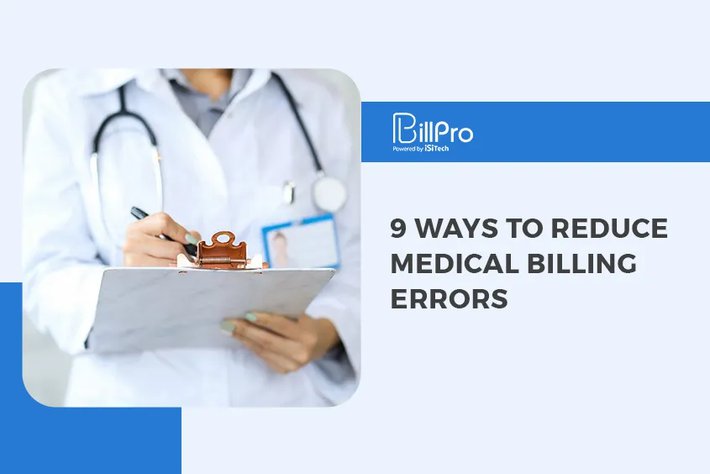
January 04, 2022
Last updated on
September 17, 2023
5 min read

3.7/5 (6 votes)

698 views
According to Becker’s Hospital Review, 80% of all medical bills contain errors. Yes, you read that correctly. Since this is the case, you’re probably wondering how you could possibly submit clean claims. The truth is, every biller experiences claim errors from time to time—it’s part of the job—but when billers fine tune their process, they can reduce the number of medical billing errors they see. Essentially, becoming more aware of your entire medical billing process puts you in a good position to dodge some errors. We took a look at how to correct medical billing errors at your practice.
Review Patient Benefits Ahead of Each Appointment
It’s tempting to skip this step when providers are dealing with returning patients. But this is a dangerous move that can easily result in error-filled claims. Whether you’re working with new patients or returning ones, verifying their personal and insurance information is crucial before the appointment can begin. This includes their birth date, address, insurance information, and more. If a patient’s treatment requires prior authorization, make sure you request that ahead of time. Failing to verify information ahead of each appointment will increase your chances of rejected or denied claims.
Check for Errors in Patient Information
The smallest mistakes can be cause for rejection. If a patient’s name is spelled incorrectly, the claim will be rejected. If a patient’s birthday is incorrect, the claim will be rejected. It’s worth taking the extra few minutes to ensure that all information is recorded correctly to avoid these Medicaid billing errors. This is as simple as letting the patient review the information on record before heading in for their appointment.
Verify Codes and Insurance Information

There are currently thousands of different ICD codes, with more being added regularly to keep up with new viruses and treatments. An incorrect code will result in a rejected or denied claim, so it’s crucial that billers and coders be as accurate as possible. One way to avoid rejections is by coding to the highest number possible for that code. The best way to ensure all codes are correct is by using a billing software system that checks for errors automatically.
Complete Regular Training With Your Staff
Training remains one of the best ways to keep your team updated on payer policies, business goals, and new strategies. If your billers are continuously making the same errors on claims, it’s clear that you need to offer training to solve the problem. Whether it’s every quarter or every month, make sure you set a precedent of offering regular training sessions to your team and encourage them to bring ideas and questions to the table.
Avoid Duplicate Claims
A duplicate claim is one that is submitted on the same day, for the same service, with all of the same information as the matching claim. Duplicate claims are typically an accident or the result of poor communication, but your team should do everything possible to prevent these. This might mean keeping better documentation, which is best done through an electronic billing system.
File Claims on Time
Every payer you work with will have a deadline on claim submissions. Typically, insurance companies will give billers a 60-90 day timeframe in which they can submit claims, plus an additional 45 days for any appeals that may be necessary. This is a generous enough time frame that your company should be able to develop a procedure to ensure claims are submitted on time, every time. If a claim is filed after the deadline, it will likely result in lost money for your practice.
Encourage Team Collaboration

Your goal is to hire experienced, smart employees. So, when you have your team assembled, make sure they’re working together to be as efficient as possible. This means creating a process that uses everyone’s talents to make sure the job is executed quickly and accurately. Once you find a process that works, you’re golden.
Avoid Upcoding and Undercoding
Upcoding and undercoding may be done inadvertently, however, if done purposefully, they are highly illegal practices that can result in fines for your company. If these things are done intentionally, upcoding is when codes are entered for services that were not received or services that are more expensive than the ones the patient actually received in order to get more money. Undercoding is when codes are left out of a patient’s bill, usually to avoid an audit. If you’re ever looking to save money, these are not the ways to do so. If you’re caught intentionally upcoding or undercoding, you’ll find yourself in serious legal trouble, and your practice’s reputation will be tarnished.
Submit Claims With Billing Software
There are a variety of ways your business can improve its chances of submitting clean claims and reduce medical billing errors. One of the best ways to do so is by investing in reliable NYS Medicaid billing software. If you’re on the search for a system that fits your needs, get in touch with the team at BillPro to learn about our product during a
free demo!

 3.7/5 (6 votes)
3.7/5 (6 votes)
 698 views
698 views






